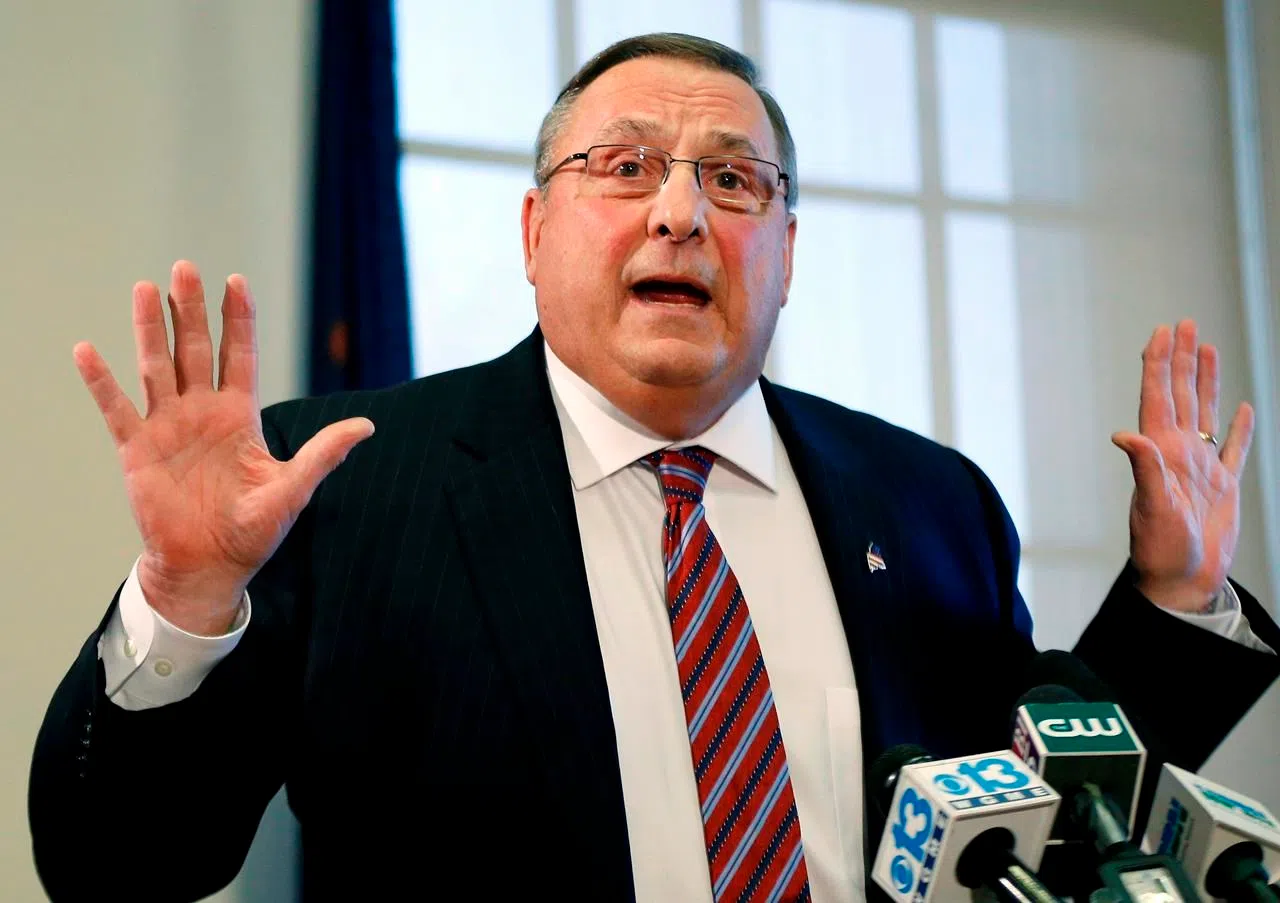
Stats on drug trafficking, race don’t back up Maine governor
PORTLAND, Maine — No law enforcement statistics even come close to backing up Republican Gov. Paul LePage’s assertion blacks and Hispanics account for “90-plus per cent” of heroin trafficking arrests in his state.
LePage, who previously told the Portland NAACP chapter to “kiss my butt” and blamed out-of-state drug dealers for impregnating “young white” girls, sparked another racial uproar when he said Aug. 24 that data he’d collected indicate out-of-state blacks and Hispanics accounted for “90-plus per cent” of heroin trafficking arrests in Maine.
FBI data contradict LePage’s assertion, and a criminologist called the governor’s data “laughable.”
Meanwhile, members of the black community in Maine, the whitest state, fear LePage’s comments strengthen racial stereotypes and tacitly approve of racial profiling.
“I think this fear-mongering and these us-against-them kind of statements do not advance the community conversation, do not address the real issue of drug abuse,” said the Rev. Kenneth I. Lewis Jr., pastor at the Green Memorial A.M.E. Church, Maine’s oldest African-American congregation, in Portland.
The Maine Department of Public Safety doesn’t include race when compiling and analyzing crime data. And the most recent crime data from the FBI suggest the governor’s claim doesn’t pass muster.
The FBI data show that blacks accounted for 14 per cent of a total of 1,211 drug sale and manufacturing arrests and 7.4 per cent of 5,791 total drug arrests in Maine in 2014, the most recent numbers available.
Broken down by type of offence, the data showed that blacks accounted for 36 per cent of arrests for selling or manufacturing cocaine, opium and their derivatives and 26 per cent when synthetic narcotics including most prescription narcotics were included in the tally. The FBI doesn’t include a category for Hispanics in its statistics.
Far from “90-plus per cent,” the FBI figures could reflect even higher numbers of black offenders than reality because of small sample size, racial profiling and other factors, said Jack McDevitt, director of Northeastern University’s Institute on Race and Justice in Boston.
At a town meeting, LePage made these comments:
“Let me tell you this, explain to you, I made the comment that black people are trafficking in our state. Now, ever since I said that comment, I’ve been collecting every single drug dealer who has been arrested in our state. I don’t ask them to come to Maine and sell their poison, but they come, and I will tell you that 90-plus per cent of those pictures in my book, and it’s a three-ringed binder, are black and Hispanic people from Waterbury, Connecticut, the Bronx and Brooklyn.”
LePage said the contents of the binder are news clippings, not scientific data, that he began collecting in January after being criticized for saying out-of-state drug dealers were impregnating “young white” girls.
Professor Gia Barboza, of Northeastern’s School of Criminology and Criminal Justice, described the governor’s “90-plus per cent” figure as “laughable” and “completely inaccurate.”
Media organizations including The Associated Press have requested that LePage’s office turn over a copy of the binder’s contents, but it has yet to do so. LePage, who has said he’s no longer speaking to reporters, did not respond to a request by the AP to clarify or defend his comments.
The controversy over LePage’s remarks exploded when he left an obscenity-laden tirade the next day on the voicemail of a Democratic lawmaker he thought called him a racist. LePage eventually apologized to the lawmaker but never for the remarks about race.
In later explaining himself, LePage described Maine’s problem of opioid addiction, which resulted in a record high 272 overdose deaths last year, in terms of war, saying it’s important to identify the enemy and then to attack the enemy.
“Look, the bad guy is the bad guy, I don’t care what colour he is,” LePage said two days after the town meeting. “When you go to war, if you know the enemy and the enemy dresses in red and you dress in blue, then you shoot at red.”
___
Associated Press data journalist Meghan Hoyer in Washington, D.C., contributed to this report. Follow David Sharp on Twitter at https://twitter.com/David_Sharp_AP. His work can be found at http://bigstory.ap.org/content/david-sharp .
___
This story has been corrected to show cocaine is not derived from opium.
David Sharp, The Associated Press
©2016 The Canadian Press



